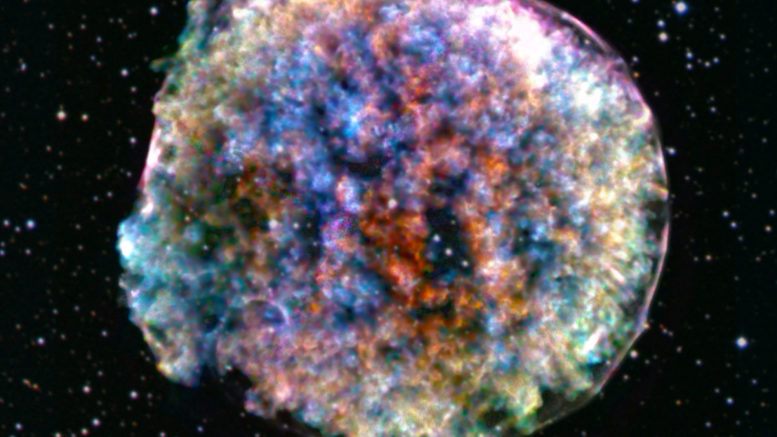The celestial object known today as supernovas has undergone some evolution. The first version of the term was “supernovae”, which is thought to have been coined during 1931 Caltech lectures by Walter Baade and Fritz Zwicky. The term did evolve a bit to become “super-Novae” when a journal paper published by Knut Lundmark in 1933 and in a 1934 paper by Baade and Zwicky. Again the name changed in 1938, to what we know of today as the modern spelling as the hyphen was removed.
Observation
Supernova searches fall into two classes: those focused on relatively nearby events and those looking farther away. Utilizing properties of the expansion of the universe, the distance to a remote object can be estimated by measuring its Doppler shift. This means that on average, the more-distant objects recede with greater velocity than those nearby; therefore, these objects have a higher redshift. Supernovae in other galaxies cannot be predicted with any meaningful accuracy; henceforth, it is often the case that when discovered, supernovas are already in progress.
Naming Convention
After they are discovered, supernova are reported to the International Astronomical Union’s Central Bureau for Astronomical Telegrams. Once received, the International Astronomical Union sends out a circular with the name that it assigns to that supernova.
The name provided by the IAU is formed using the prefix SN, followed by the year of discovery, suffixed with a one or two-letter designation. The first 26 discovered supernovae of the year are designated with a capital letter from A to Z. Afterward pairs of lower-case letters are used: aa, ab, and etc.
Classification Of Supernovas
There are currently 5 types of supernovas, which astronomers use to classify supernovae based upon light curves and the absorption lines of different chemical elements that appear in their spectra. If the spectrum of a supernova contains lines of hydrogen, then the supernova is classified as Type II; otherwise it is Type I. In each of these two types there are subdivisions according to the presence of lines from other elements or the shape of the light curve.
Type 1:
Type Ia –Presents a singly ionized silicon line at 615.0 nm near peak light
Type Ib — Shows a non-ionized helium line at 587.6 nm
Type Ib/c — Weak or no silicon absorption feature
Type Ic — Weak or no helium
Type 2:
Type II-P/-L/n — Type II spectrum throughout
Type II-P –Reaches a “plateau” in its light curve
Type II-L –Displays a “linear” decrease in its light curve
Type IIb –Spectrum changes to become like Type Ib
Type IIn — Some narrow lines
Type II-P/L — No narrow lines
Types III, IV, and V
There were additional types of supernovae that Fritz Zwicky defined that were based on a very few examples that did not cleanly fit the existing parameters for Type I or Type II supernovae. Since it was recommended to create these different types of supernovae, the scientific community has since determine that all supernovae would now be treated as peculiar Type II supernovae.
Current Models
Supernovae type codes are taxonomic as the type number describes the light observed from the supernova, not necessarily its cause. Each type of supernova will have a different type as they all form differently and emit different colors of light.
Impacts
- Supernovae are potentially strong galactic sources of gravitational waves.
- Supernova remnants are thought to accelerate a large fraction of galactic primary cosmic rays.
- Supernovae are a major source of elements in the interstellar medium from oxygen through to rubidium, though the theoretical abundances of the elements produced or seen in the spectra varies significantly depending on the various supernova types. Type Ia supernovae produce mainly silicon and iron-peak elements, which are metals such as nickel and iron. Core collapse supernovae eject much smaller quantities of the iron-peak elements than type Ia supernovae, but larger masses of light alpha elements such as oxygen and neon, and elements heavier than zinc. The bulk of the material ejected by type II supernovae is hydrogen and helium.
References and Further Research
https://www.nasa.gov/audience/forstudents/5-8/features/nasa-knows/what-is-a-supernova.html

Leave a comment